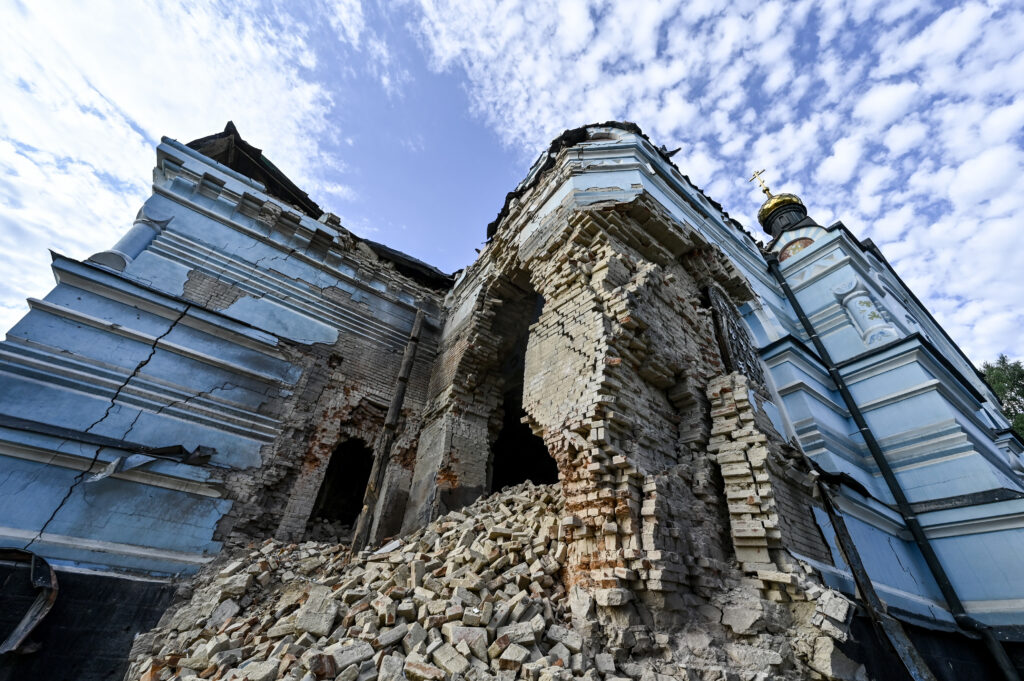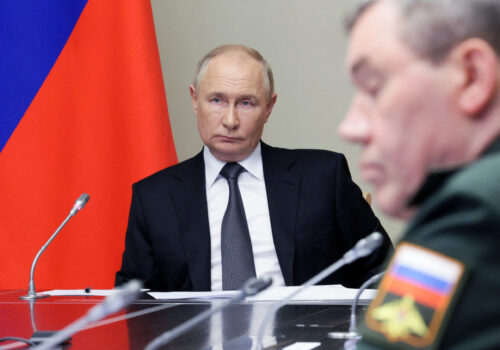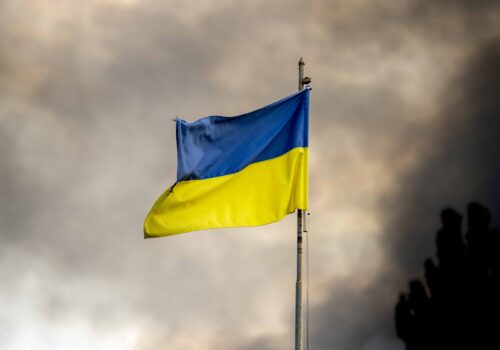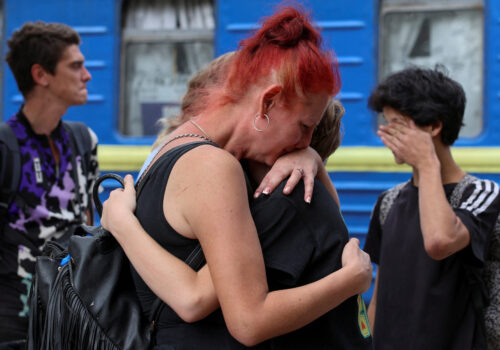
Countering Russia’s campaign to erase Ukrainian cultural identity
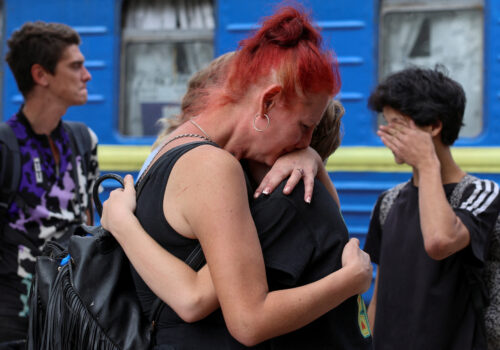
Russia’s full-scale invasion of Ukraine has included a wide range of attacks on Ukrainian heritage sites as the Kremlin seeks to erase Ukraine’s cultural identity. By September 2024, UNESCO had officially verified damage to 438 cultural sites in Ukraine including religious buildings, museums, libraries, and monuments.
Writing earlier this year, Ukraine’s Prosecutor General Andriy Kostin said these attacks were to be expected. “The Russian thirst for the destruction of Ukrainian heritage comes as no surprise,” he noted. “It ties in to the campaign of assaulting Ukraine’s national identity; for assaulting the people’s knowledge of their history, origin, and culture is like cutting roots from a tree.”
Kyiv Security Forum Director Danylo Lubkivsky is one of many Ukrainian commentators to echo this sentiment. “Once the invasion began, it was immediately apparent that this was a war against every aspect of Ukrainian national identity including language, culture, and heritage,” he stated in a March 2024 article.
Russia’s assault on Ukrainian cultural identity has attracted considerable international concern, with numerous governments voicing their alarm and offering support to Ukraine. For example, the United States has recently unveiled plans to impose tough restrictions on the illicit trade in Ukraine’s cultural artifacts.
Since the full-scale invasion began, a large number of international initiatives have also emerged as part of efforts to document Russia’s war on Ukrainian cultural identity and preserve as much of Ukraine’s heritage as possible. These include monitoring work led by the Smithsonian Cultural Rescue Initiative, and a number of joint initiatives together with Ukraine’s museums.
Stay updated
As the world watches the Russian invasion of Ukraine unfold, UkraineAlert delivers the best Atlantic Council expert insight and analysis on Ukraine twice a week directly to your inbox.
One of the most ambitious projects aimed at the preservation of Ukrainian heritage is the Ukraine is Here platform led by Google Arts and Culture. In early September, Google officials presented the latest updates to this project, with more than one thousand new images added along with ninety new stories and several virtual galleries.
Produced through partnerships with a number of civil society groups, cultural organizations, and state agencies, this Google initiative aims to serve as a digital database of Ukraine’s cultural heritage. It includes hundreds of 3D models of churches, theaters, castles, and other historically significant buildings, along with individual items ranging from kitchen utensils to ancient armor.
Efforts to preserve Ukraine’s cultural heritage are a crucial element of the broader international response to Russia’s invasion. While the front lines of the war have not witnessed any dramatic changes in almost two years, Russia continues to bombard towns and cities across Ukraine on a virtually daily basis, frequently causing irreparable damage to the country’s cultural sites.
Russia’s relentless air war makes it all the more important to keep a detailed digital record of Ukrainian national heritage assets. During a recent forum in Ukrainian Black Sea port city Odesa, Ukraine’s Deputy Minister of Culture and Strategic Communications Anastasia Bondar said utilizing modern technologies such as digitization was a “key factor” in the struggle to safeguard Ukrainian culture for future generations.
Eurasia Center events
In addition to destroying the sites, monuments, and buildings that make up Ukraine’s cultural inheritance, the Russian invasion has also killed significant numbers of the country’s contemporary cultural community. As The Guardian’s chief culture writer Charlotte Higgins noted in a moving tribute to Ukrainian author and war crimes researcher Victoria Amelina following her death in a Russian air strike, “Stalin erased one generation of Ukraine’s artists. Now Putin is killing another.”
More than one hundred Ukrainian cultural figures have been killed since Russia launched its full-scale invasion, according to data published by worldwide literary association PEN International. One of the youngest victims was eighteen year old Ukrainian artist Veronika Kozhushko, who was killed by a Russian glide bomb in Kharkiv in August 2024.
The destruction of Ukrainian cultural heritage is entirely consistent with Russian President Vladimir Putin’s longstanding efforts to deny Ukraine’s right to exist and his insistence that Ukrainians are actually Russians (“one people”). Putin frequently claims that occupied Ukrainian regions are “historically Russian lands,” and has ordered the ruthless suppression of Ukrainian national identity in all areas currently under Kremlin control.
Russia’s campaign against Ukrainian identity even extends to the abduction and indoctrination of children on an industrial scale. In March 2023, the International Criminal Court in The Hague issued an arrest warrant for the Kremlin dictator on war crimes charges related to Russia’s mass deportation of Ukrainian children. Many of these children have reportedly been indoctrinated in camps designed to rob them of their Ukrainian identity.
With no end in sight to Russia’s invasion, international efforts to help preserve Ukraine’s cultural heritage are more necessary than ever. While the Russian army is struggling to achieve its goals on the battlefield, the actions of the occupation authorities in areas under Moscow’s control provide clear evidence that the Kremlin remains committed to erasing Ukrainian identity and extinguishing Ukrainian statehood. Unless this is prevented, a terrible precedent will be set that will shape the global security climate for many years to come.
Mercedes Sapuppo is a program assistant at the Atlantic Council’s Eurasia Center.
Further reading
The views expressed in UkraineAlert are solely those of the authors and do not necessarily reflect the views of the Atlantic Council, its staff, or its supporters.

The Eurasia Center’s mission is to enhance transatlantic cooperation in promoting stability, democratic values and prosperity in Eurasia, from Eastern Europe and Turkey in the West to the Caucasus, Russia and Central Asia in the East.
Follow us on social media
and support our work
Image: The Church of the Nativity of the Blessed Virgin Mary lies in ruins after the Russian shelling on July 8, 2024. (Ukrinform/Cover Images via Reuters Connect) Where: Novoekonomichne, Donetsk region, Ukraine When: 07 Aug 2024 Credit: Ukrinform/Cover Images **UK AND USA RIGHTS ONLY**
